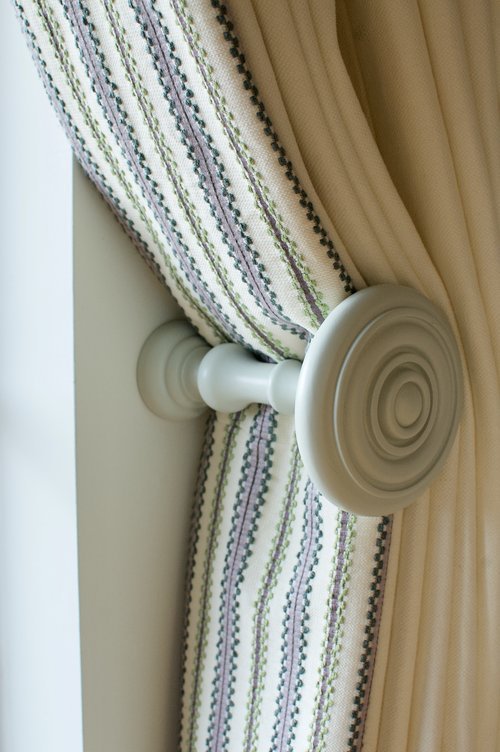Decorating with stripes
While most people don’t use stripes, they are an excellent way to add a visual impact and luxurious feel to your interiors. Whether it’s on the walls, window treatments, ceilings, lampshades or even fabrics like rugs, pillows and beddings, you can never go wrong with stripes.
The secret is to use stripes well, and the rule of thumb is that with stripes, less is often more. In other words, use them sparingly for the best results. In this post, we'll discuss how best to use stripes to get the most out of them and the mistakes to avoid when decorating with stripes.
How to use stripes to decorate
Besides making your interior crispy and polished, stripes have many more benefits as decorators. Below are some ways to decorate with stripes and make a graphic statement;
1. Add energy to your home
There is no better way to add instant energy to your indoor space than using stripes. Adding different types of stripes, either as foundation or accent, with contrasting colours can help create a luxurious interior. In addition, you could layer up other parts of the room to generate a balanced appearance.
2. Make a small room appear bigger
If you have a small room, stripes can be the perfect decorating choice. Stripes create an illusion of space, making the room larger than it actually is. In general, horizontal stripes make rooms look wider, whereas vertical stripes make the ceilings appear higher.
You can lay stripes on the floor, on walls, and in fabric to achieve its neat space-enhancing effect. While at it, be bold on your colour choices. Some options like blue variations, cream, off-white and light green have a transformative power that can help open the space even further.
3. Stripes in monochrome leave an impact
The classic black and white stripes always look chic. You can use this combination virtually anywhere in your home. From the living room to the bathroom and bedroom- the stripes never look out of order. What makes them even more appealing is that you could go all out with stripes on the wall or stay subtle with a striped sofa and still nail it.
4. Counteract stripes with less busy elements
Pairing stripes with less busy designs can produce a harmonious scheme. For instance, if you have striped walls, you can add solid furnishings. Striped throw pillows, on the other hand, can match well with some solid colours or florals. These combinations should give your eyes a resting place from the stripes.
5. Start small
Decorating with stripes can help make a bold statement. However, if done wrongly or overdone, it can be a mess. So, if you’re not sure of how to add stripes to your interior design, it is advisable to start small and build from there. You could include a striped lampshade, striped pillows or any other small decorative element. Slowly introducing striped designs into your room is a sure way to get stripes decor right.
6. Vary the width
You can use stripes with varying widths to create a playful element, especially if you have kids. In addition, this combination gives your interior a modern style.
What patterns blend with stripes?
Lucky for stripe lovers, stripes can go well with different patterns, including checks, and spots, provided these patterns have colours that complement each other. Stripes are also an excellent choice for offsetting florals.
Mistakes to Avoid When Decorating with Stripes
Stripes are classic and versatile, meaning you can use them in many places and still get desired results. But just like any other pattern, they can be a nightmare for designers if not well used.
Below are some common mistakes novice designers make when incorporating stripes into interiors that you should avoid;
Avoid colour clashing. Colours like red and pink clash and can make your room or item appear cluttered.
Don’t forget to measure the dimensions of your room to ensure the pattern fits within the space. This will prevent the formation of awkward intersections.
Don’t go overboard with your stripes. Avoid using stripes on walls, floors, windows and ceilings at the same time. Instead, use them sparingly, including only one striped part at a time.
Never forget a counterpoint. When using solid stripes, ensure you use a complement to offset their linear nature.
Never use stripes to cover uneven walls. Always make sure your walls are straight before applying.
Conclusion
Stripes are versatile, and you can use them in a variety of ways. Feel free to experiment with different patterns, designs and colour combinations. However, keep them to a minimum as overdoing stripes can mess with your interior instead of providing a perfect scheme.
If you would like further support for your interior design project, get in touch, and we’d be more than happy to help you.





